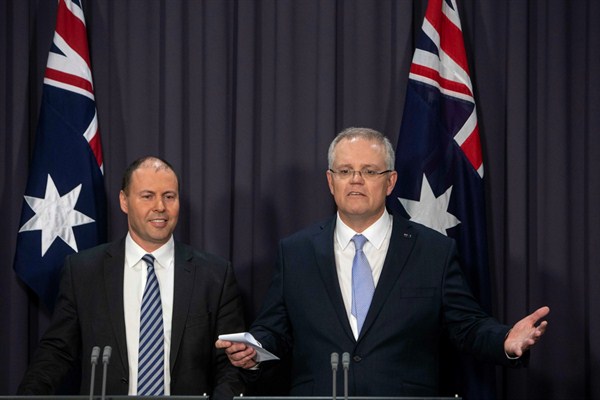Malcom Turnbull’s tenure as prime minister of Australia ended the same way it began: with an intra-party revolt. Turnbull, a moderate in his conservative Liberal Party, successfully contested then-Prime Minister Tony Abbott’s leadership in September 2015. But Abbott and his supporters moved to exact revenge, finally pushing Turnbull out last month. Scott Morrison, the newly sworn-in prime minister, takes the helm of a Liberal Party weakened by internal strife and a tenuous grip on power, as the opposition Labor Party surges ahead in the polls. In an email interview, Lloyd Cox, a lecturer in politics at Macquarie University in Sydney, discusses the recent leadership change and the grim political situation facing the new Australian government.
World Politics Review: What are the internal factors within the Liberal Party that led to Turnbull’s downfall as prime minister, and how did Morrison come to replace him?
Lloyd Cox: Turnbull’s ousting from the Liberal Party leadership, and hence the end of his tenure as prime minister, was the culmination of a lengthy period of political destabilization. It was the fourth time in eight years that a sitting prime minister has been removed from office by his own party. Australia has now had seven prime ministers in a little over a decade.

